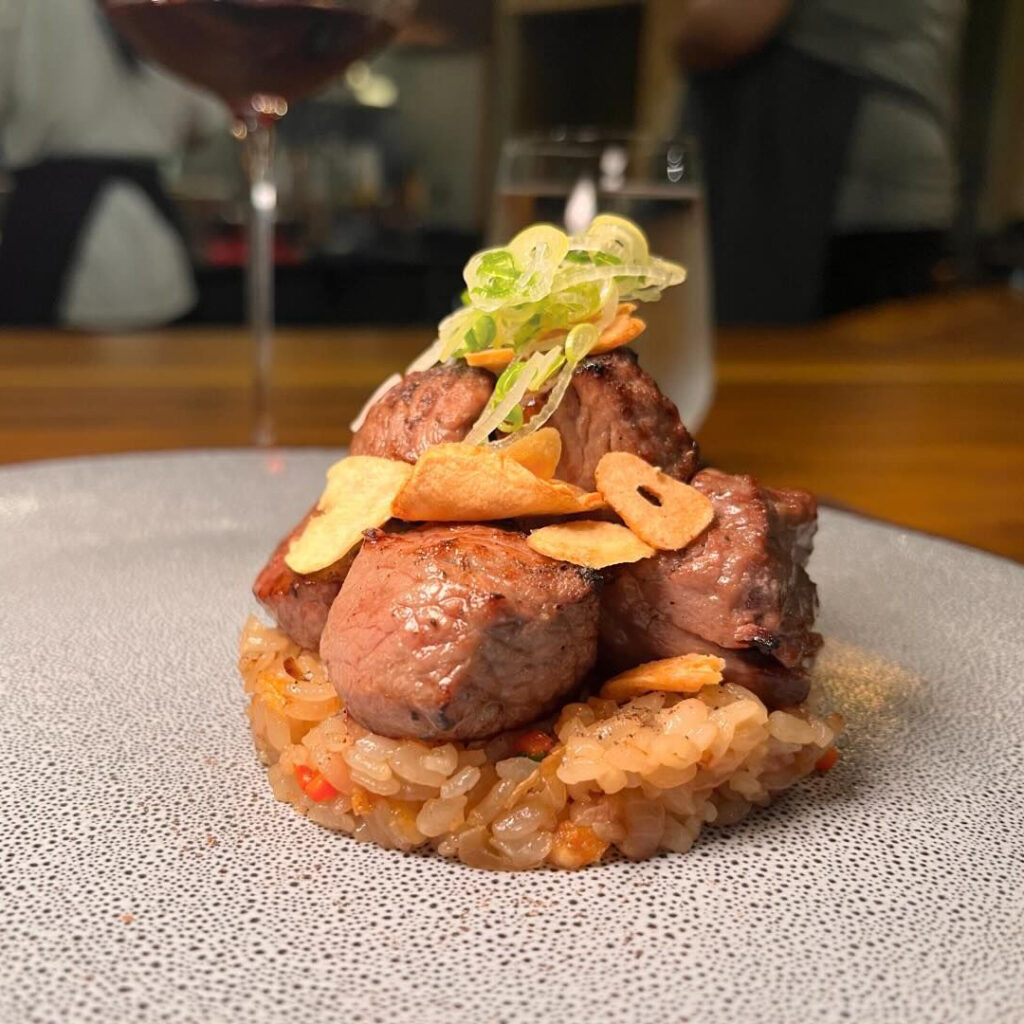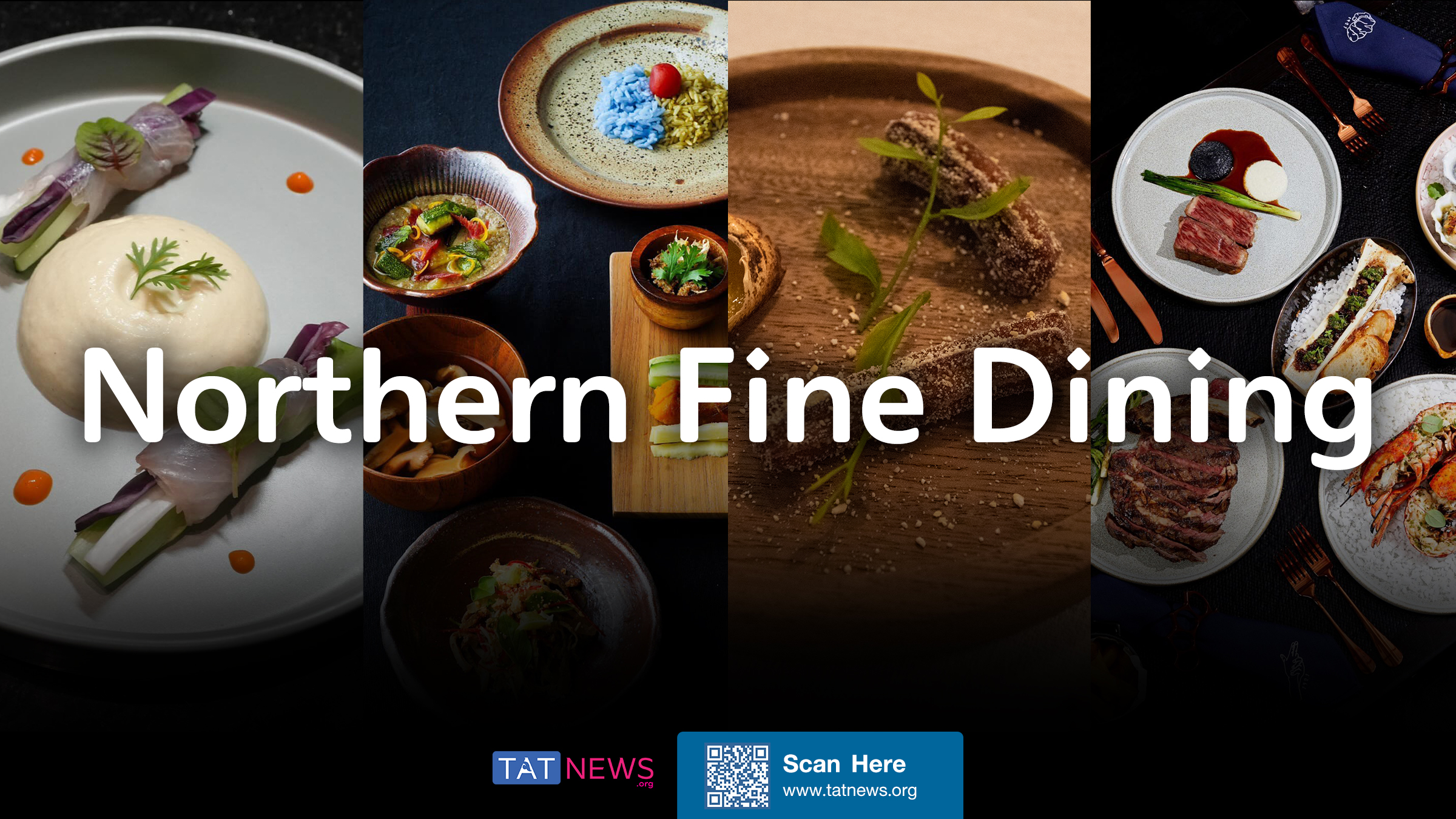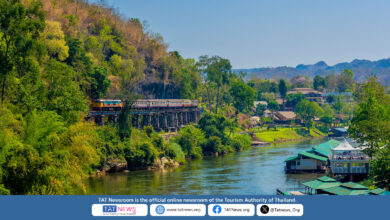Northern Thailand, particularly the culturally rich region of Chiang Mai and its surrounding provinces, is a treasure trove of history, artistry, and nature. Its lush mountains, serene temples, and vibrant markets are well-known, but its culinary landscape is also a sight. Fine dining establishments are redefining traditional Lanna cuisine by infusing it with global techniques, creating a truly extraordinary culinary experience. Let’s delve into the rise of fine dining in Northern Thailand and discover some of the best spots to savor.
The Fusion of Tradition and Innovation: Northern Thai cuisine is a delightful blend of tradition and innovation. It’s a culinary journey that takes you from the ancient flavors of the Lanna Kingdom to the modern techniques of today’s chefs, creating a dining experience that’s both nostalgic and exciting. The food of northern Thailand is deeply rooted in the ancient flavors of the Lanna Kingdom, the former independent state that ruled the region from the 13th to the 18th centuries. This cuisine emphasizes local, seasonal ingredients like sticky rice, herbs, wild greens, freshwater fish, and meats, prepared in a way that’s often slow-cooked, grilled, or steamed. The food is known for its balanced flavors—spicy, salty, sour, and a touch of sweetness—but never overpowering.
In recent years, chefs in Northern Thailand have elevated the traditional flavors of the Lanna Kingdom with modern cooking techniques. This fusion of old and new has given birth to the Northern Thai fine dining renaissance, offering diners a nostalgic yet innovative experience.
Locus Native Food Lab (Chiang Rai)



Situated amongst the lush green landscape of mountainous Chiang Rai, Locus Native Food Lab, where chef/owner Gongwut Chaiwongkhajorn works his magic, this fine dining chef’s table restaurant is truly something special. He draws on local ingredients indigenous to Chiang Rai and uses certain herbs and vegetables familiar only to the residents of other provinces. The restaurant focuses on simplicity, with foods that appear uncomplicated but burst with many flavors that consistently surprise. The sustainable dining concept is strong here with dishes like Kaeng Toon with catfish, utilizing the wisdom of the Lanna people in combining the native Bon plant with taro and fish. The result is a soup with a sour and sweet taste that is the inherent flavor of the vegetables.
Blackitch Artisan Kitchen (Chiang Mai)



For an experimental take on fine dining, Blackitch Artisan Kitchen offers a small, personalized tasting menu focusing on sustainability. Chef Phanuphon “Black” is known for his innovative approach to local ingredients, often foraging for herbs and using traditional fermentation methods. Dishes may include elements like fermented soybeans, wild forest mushrooms, or seafood from the Andaman coast, all presented with artistic flair.
Cuisine de Garden (Hang Dong, Chiang Mai)



Nestled on the outskirts of Chiang Mai, Cuisine de Garden offers a nature-inspired dining experience. The restaurant centers around bringing the beauty of northern Thailand to the plate, with a menu that changes to reflect the seasons. Ingredients like local flowers, herbs, and roots center in visually stunning dishes that blend modernist techniques with authentic flavors.
The Service at 1921 House (Chiang Mai)



Located in the stunning Anantara Chiang Mai Resort, the Service offers a luxurious steakhouse experience in a teak house built over a century ago. The restaurant provides imported premium beef with dishes like Scotch Egg and afternoon tea that you would likely find in a British club in the early 20th Century. The setting is tranquil and elegant, with views of the resort, making it a perfect place to experience both Lanna tradition and delicate dining sophistication.
Embracing Sustainability and Farm-to-Table Philosophy
Northern Thailand’s culinary scene is a beacon of sustainability. Many chefs here adhere to farm-to-table principles, using locally grown and foraged ingredients to reduce their carbon footprint and support local farmers. This philosophy is particularly fitting given the region’s abundant natural resources. With access to fresh produce, herbs, and even wild game, chefs in northern Thailand can offer diners authentic flavors that reflect the richness of the land.
A Region on the Culinary Map
While Bangkok has long been Thailand’s capital, Northern Thailand is increasingly being recognized on the global culinary stage. From traditional Lanna fare to inventive molecular gastronomy, the region offers an incredible variety of high-end dining experiences catering to local and international tastes. It’s a food where ancient recipes meet modern flair, and the land’s natural beauty is mirrored in every bite.
In essence, fine dining in Northern Thailand offers more than just a meal—it’s a sensory exploration of a region that values history, sustainability, and creativity. Whether you’re a gourmand or simply curious about new flavors, going for a meal in a posh restaurant in this region will surely leave an indelible mark. To plan your culinary trip to Northern Thailand, start by researching the fine dining establishments that interest you and making reservations in advance. Consider the season and the availability of certain ingredients, as the menu often changes to reflect the local produce. Also, don’t forget to explore the local markets and street food scene for a more comprehensive culinary experience.

About the Author
“Frequent foodie and occasional craftsman of travel stories, Chattan Kunjara Na Ayudhya (Chat) draws on his nearly 4 decades of promoting Thailand’s tourism industry to highlight everything from world-class attractions to hidden gems. When not writing stuff, he makes it a mission to catch rom-coms and DC superheroes whenever they show up in theaters.”






